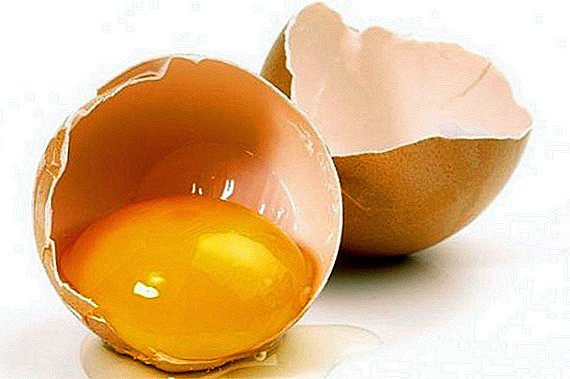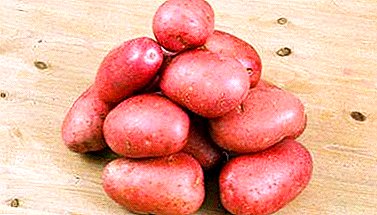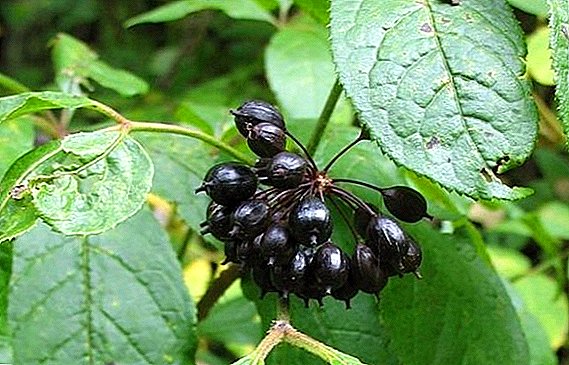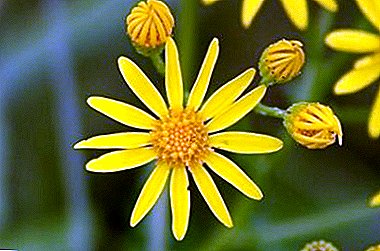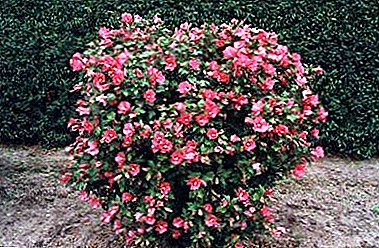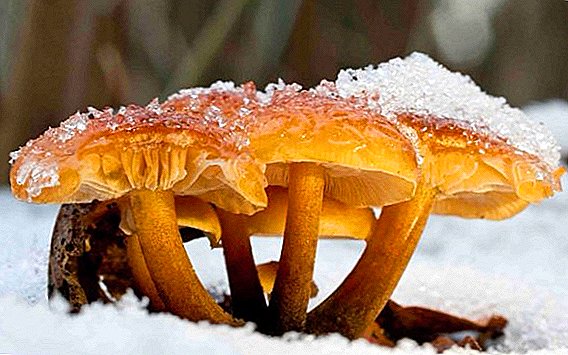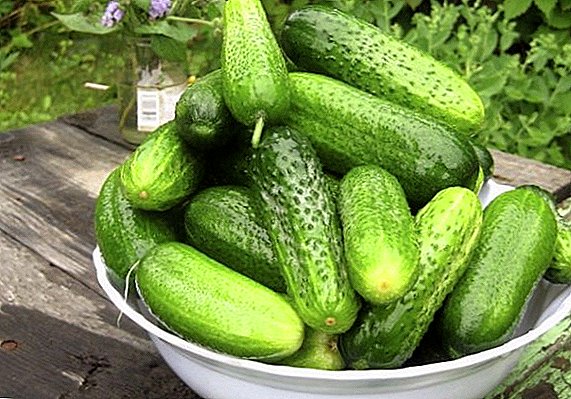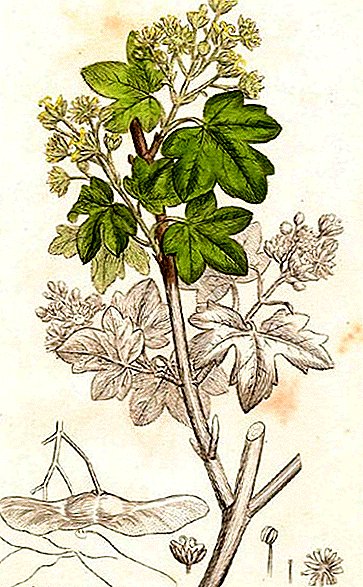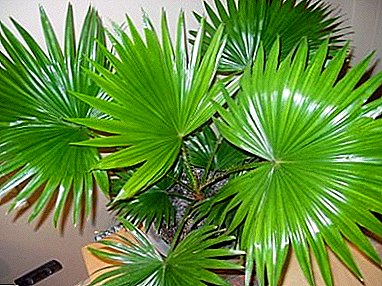
Liviston - A palm tree with leaves cut only 3/4, and not completely. The stem is fibrous with traces of attached petioles remaining after the leaf fall. They have thorns, which is a distinctive feature of this palm.
Perennial, grows quickly, can be grown in the room, almost does not bloom at home content.
In this article we will look at the main points about Liviston's palm: care at home, photos, types and more.
Kinds
There are almost 30 species, reach a height of 25 m, with large fan leaves (their diameter is up to 100 cm) and teeth curved downwards. Among them especially common:
- Rotundifolia - from South Asia and Australia, up to 35 m;
- South - popular in Eastern Australia, grows up to 25 m, trunk diameter 34-40 cm. Fan leaves up to 2 m in diameter. When landing in open ground, it can do without moisture for some time, and it should be watered regularly when grown indoors. Ropes, sacks, baskets, hats are made from the young leaves of this palm tree, used in cooking;
- Chinese - originally from South China, grows to 12 m, trunk 40-50 cm in diameter. Remains of already dead leaves are visible on the upper part of the trunk. The shape of the leaves at Livistona Chinese fan-shaped, they are segmented to the middle, incised at the end;
- Round leaf - distributed in the Moluccas and Java, it prefers sandy soil. It grows up to 17 m, the trunk diameter is up to 14 cm. The fan leaves, 1.5 m in diameter, rounded, cut into 2/3 of the length to form folded lobes. Very ornamental plant, well will be suitable for cultivation in rooms with moderately warm climate.
- Squat - grows in the north of Australia, height is 7 m, diameter of a trunk is up to 8 cm. On a spherical krone there are 8-15 leaves. They are glossy, segments divided into shares (from 30 to 40). The dioecious plant, female inflorescences are distinguished by straight inflorescences 2.3 m long. On male plants, inflorescences are arched 1.8 m long;
- Tiny - grows in Borneo, prefers sandy soil. The length of the stem is 5 m, diameter 2.5 cm. The crown is egg-shaped with fan-shaped leaves (from 16 to 20). On spines, curved petioles, inflorescence length up to 40 cm, hermaphroditic appearance.


Palm Liviston: photo of the Chinese species.

This is a hermaphrodite species, flowers bisexual in inflorescences up to 1.2 m long. He does not make high demands on the soil; he loves the direct sun. Able to endure a short period of drought when grown in subtropics in open ground. This feature provides a long taproot;

Care when grown at home
Palma originally from the tropics is popular with gardeners. In addition to its high decorative qualities, the ability to purify the air is added.
Features care after purchase
Before buying should pay attention: must be bright green leaves and be sure to new growth. Leaves with brown tips or spots are undesirable.
After the purchase need to transplant a palm tree from shipping container. Opinions regarding the timing of transplantation are controversial: some recommend a transplant to take place after 1-1.5 months (so that the plant adapts), others advise to do it right away.
Lighting
Loves the light, feels great at the window facing south. In the summer you can put on the balcony, covering from the midday heat. To make the crown look symmetrical, the palm must be rotated.
Temperature
Loves warmth feels comfortable when 14-16 degrees in the winter and 16-22 degrees in the warm period.
Bloom
Only possible in natural conditions and greenhouses. Can not get flowering in room conditions.
Air humidity
Is required regular spraying, the leaves should be cleaned of dust, low copies wash in the shower. In winter it is necessary to spray less. At low humidity, the tips of the leaves dry up.
Watering
For watering soft water required (tepid). Spring and summer should be watered when the soil dries. In winter, you need to reduce watering.
Top dressing
 Every 10 days organic fertilizers are required (from May to September).
Every 10 days organic fertilizers are required (from May to September).
Good care affects growth and 3 new sheets appear annually.
Transfer
As soon as the pot is filled with roots or they germinate through the drainage holes, it is time to repot the palm tree. The procedure takes hardbecause the roots are injured.
Adult plants need a transplant every 5 years, younger ones after 3 years.
Not recommended for no reason to disturb the roots, if necessary, use transshipment, saving the earthy bed. If the roots of the plant rot, they should be cut when transplanted, leave healthy and carefully placed in a pot. The pot needs a deep and heavy, so that under the weight of the palm does not turn over.
The soil
Suitable mixture for palm trees, as well as self-prepared substrate from components in equal parts:
- charcoal;
- sand;
- rotted manure;
- peat land;
- humus-leaf land;
- the land is heavy sod.
Breeding
 Liviston can grow from seeds and lateral offspring (when they appear). When propagated by seeds, the germination process is long, lasts almost 3 months. Sowing of seeds produced in the spring in the heated earth 1 cm deep.
Liviston can grow from seeds and lateral offspring (when they appear). When propagated by seeds, the germination process is long, lasts almost 3 months. Sowing of seeds produced in the spring in the heated earth 1 cm deep.
After germination, seedlings are seated in pots. At the age of 3 years, the palm tree looks quite decorative.
Sometimes offspring is formed in adult plants. When transplanting them can be separated, trying not to damage the roots.
How to grow a palm tree with a young plant, see here.
Fruit
Liviston Chinese has fruits (1-2 cm) of blue-green or green color, in the shape of an ellipse, ball, pear or rounded. Stumpy fruit (2 cm) in the form of an ellipse or pear, black or purple. Fruits of yellow-brown livistons (1.5 cm) in the shape of a ball, black. Tiny has spherical fruits of purple-green color (1 cm).
Diseases and pests
Affected by pests: mealybug, flap, spider mite. When pests are found, the palm is treated with soapy water, subsequently washed with warm water and sprayed with an insecticidal preparation.
Livistons have spread among flower growers: you can easily grow from seed, grow quickly. After only 3 years, young plants become the most decorative.
You can look at the beauty of Liviston's palm in the next video.


